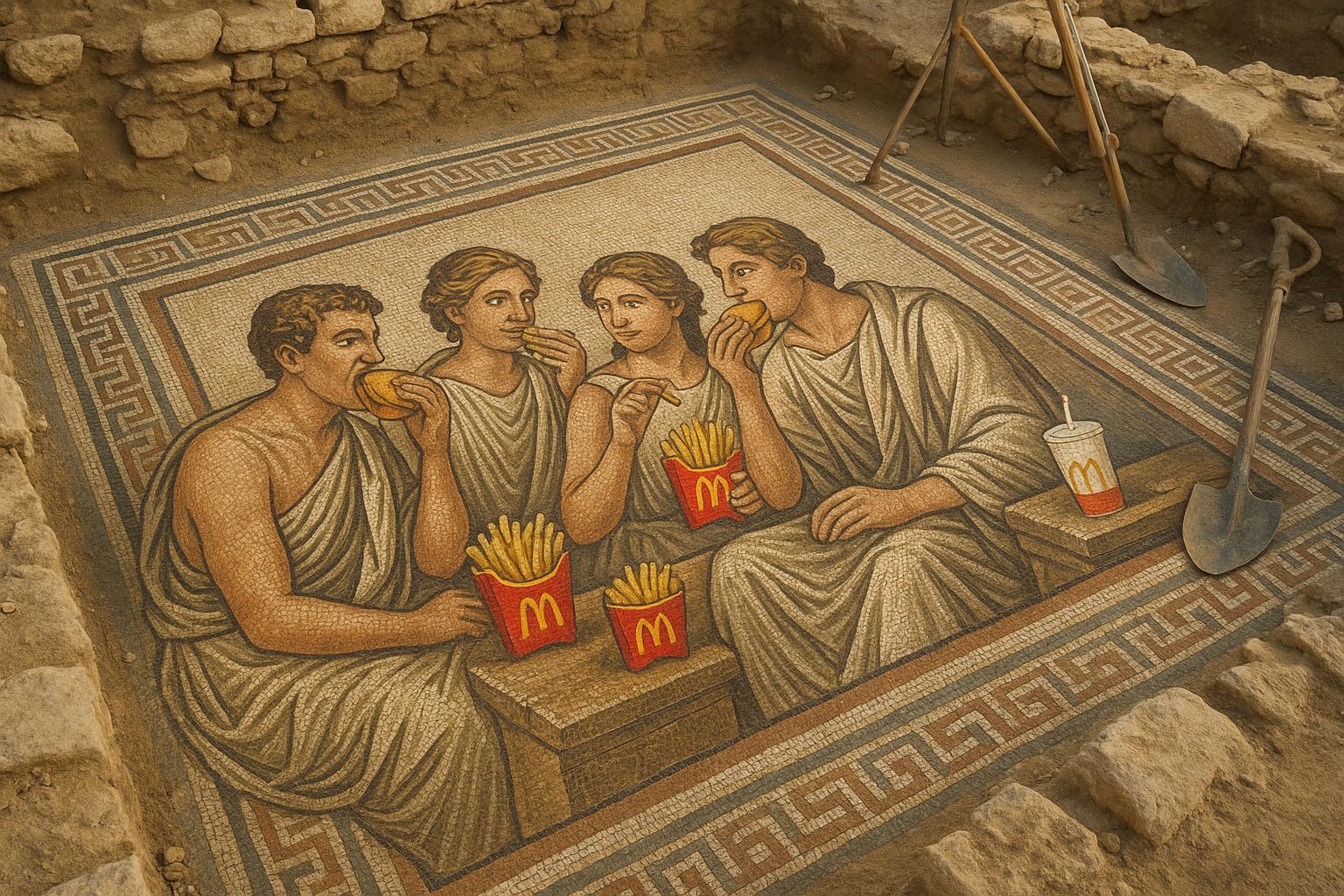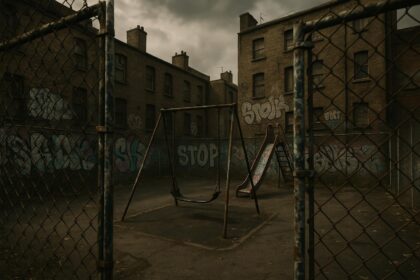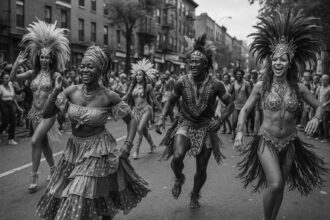McDonald’s Italia has unveiled a monumental 18,000-piece mosaic in Rome’s Galleria Alberto Sordi that fuses classical imagery with fast-food branding, sparking debate over the blend of cultural respect and commercial promotion in historic settings.
McDonald’s Italia has chosen a bold approach to advertising, unveiling an elaborate 18,000-piece mosaic in the heart of Rome’s Galleria Alberto Sordi mall. This stunning installation, crafted by a team of ten artisans, draws on the city’s rich history by mimicking an archaeological dig—a context that feels quite fitting, given Rome’s frequent encounters with its storied past during routine construction projects. Visitors to the mall might initially perceive the scene as another ancient discovery, but on closer inspection, they spot the iconic golden arches intertwined with classical imagery, as four toga-clad figures are depicted enjoying McDonald’s beloved burgers and fries. Above them, the Latin phrase “GAUDEAT CLASSICIS,” which translates to “Enjoy the classics,” resonates with a cheeky nod to the historical context.
This mosaic is more than a mere marketing gimmick; it is part of a broader campaign that seeks to connect McDonald’s mainstream offerings with the cultural heritage of Rome. By equating their fast-food classics with Rome’s ancient treasures, the company aims to celebrate, if somewhat controversially, the timeless appeal of both. While some locals appreciate this innovative blend of modern branding with historical elements, others liken it to an intrusion, comparing the campaign’s audacity to the idea of establishing a drive-through at the Pantheon.
The juxtaposition of fast food and ancient history is not entirely new for McDonald’s. In 2014, during the construction of a new outlet in Frattocchie, workers uncovered an ancient Roman road along with human skeletons. Rather than halting construction, McDonald’s opted to spend €300,000 to incorporate this archaeological find into their restaurant design, a move that was billed as the “first museum-restaurant.” According to Gary He, author of McAtlas: A Global Guide to the Golden Arches, this initiative showcased the chain’s commitment to respecting and integrating historical significance into its operations.
McDonald’s history in Rome extends back to 1986, when it opened its first location near the Spanish Steps. Since then, the brand has proliferated across the city, growing to over 50 locations. This deepening urban presence highlights an ongoing trend where consumer brands increasingly leverage cultural heritage as a marketing tool. Such methods, while potentially effective, walk a fine line between homage and appropriation.
This trend is exemplified not only by McDonald’s but also by Coca-Cola, which launched its ‘Masterpiece’ campaign in 2023. This advertisement creatively entwined its product with renowned artworks, such as Andy Warhol’s famous depiction of a Coca-Cola bottle, transitioning through various iconic pieces before culminating in an amusing interaction with an uninspired art student. This innovative approach sparked discussion on the effectiveness of blending commercial products with cultural symbols.
Similarly, the Maxam Toothpaste brand in China adopted a historical angle for its 2013 ‘Civilisation’ campaign, drawing parallels between decayed teeth and the ruins of ancient civilisations. This striking visual metaphor cleverly advised consumers on the importance of dental hygiene while evoking cultural reflections.
While campaigns like these can be seen as clever marketing moves, they may also raise questions about the ethical implications of cultural representation. The dialogue surrounding these strategies often reflects broader societal concerns, where the line between respect and exploitation in the context of cultural heritage can become blurred. The reception of such advertising ultimately hinges on how well these messages resonate with local sensibilities, highlighting the intricate relationship between commercial interests and the preservation of history.
 Reference Map:
Reference Map:
- Paragraph 1 – [1], [6]
- Paragraph 2 – [1], [2], [4]
- Paragraph 3 – [2], [5]
- Paragraph 4 – [5], [3]
- Paragraph 5 – [7]
Source: Noah Wire Services
- https://www.afaqs.com/news/brands/mcdonalds-serves-up-history-with-its-new-ancient-mosaic-ad-in-rome-9351445 – Please view link – unable to able to access data
- https://www.businessinsider.com/mcdonalds-first-museum-restaurant-in-rome-2014-5 – In 2014, while constructing a new McDonald’s outlet in Frattocchie, Rome, workers discovered ancient Roman ruins, including skeletons. Instead of stopping the construction, McDonald’s invested 300,000 euros to integrate the archaeological site into the restaurant design, creating the first ‘museum-restaurant’ of its kind, as reported by Business Insider.
- https://www.thelocal.it/20230501/coca-cola-makes-art-history-in-its-latest-advertisement/ – In 2023, Coca-Cola launched the ‘Masterpiece’ campaign, creatively integrating famous artworks. The ad features the bottle from Andy Warhol’s painting transitioning through various artworks, culminating in a unique moment where the bottle serves an uninspired art student, blending history and marketing in a modern twist on brand advertising.
- https://www.theverge.com/2014/5/22/5747766/archaeological-discovery-ancient-roman-road-mcdonalds – An archaeological discovery was made during the construction of a McDonald’s restaurant on the outskirts of Rome, revealing an ancient Roman road. This prompted McDonald’s to integrate the ruins into the restaurant design, highlighting the intersection of modern commerce with historical preservation.
- https://www.foodanddrinknews.co.uk/2023/05/10/consumer-tribes-chapman-taylor/ – Consumer brands are increasingly integrating cultural heritage into their marketing strategies, highlighting a delicate balance between appreciation and appropriation. This trend reflects a broader movement in advertising to connect with audiences through historical and cultural themes, resonating with contemporary consumers.
- https://www.creativereview.com/mcdonalds-jewellery-mosaic-everything-you-need-to-know/ – McDonald’s Italia has crafted an eye-catching advertising mosaic in Rome, highlighting its cultural connection to historical art. The 18,000-piece creation showcases the fast-food chain’s branding intertwined with Latin texts and classical imagery, prompting discussions on the effectiveness and appropriateness of such advertising strategies in a city steeped in history.
- https://www.marketingweek.com/maxam-toothpaste-ads-ancient-civilisations/ – Maxam Toothpaste’s 2013 campaign cleverly used historical themes depicting decayed teeth as ruins of ancient civilizations, aiming to correlate poor dental health with neglect, similar to the erosion of cultural heritage. The ad evoked powerful imagery and drew attention to the importance of dental hygiene through artistic connections to history.













